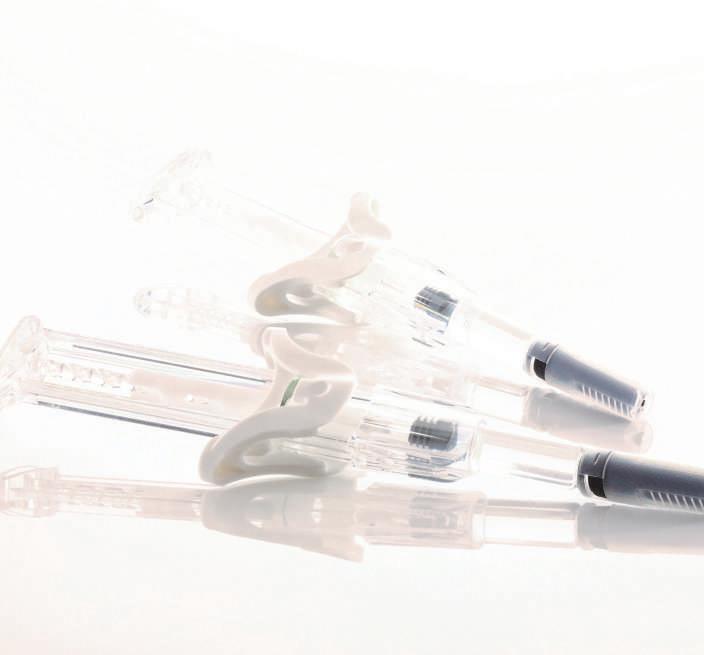Drug Discovery, (Pulmonary) Drug Development Discovery, Development & Delivery & Delivery
Manufacturing DPIs: An Engineering Perspective A Case Study IMA Active and Medochemie have joined forces in order to achieve optimal low-dose dry powder inhalers by combining the dosator technology and the direct net weight control both in a table-top device and in an industrial production-scale capsule filler.
When developing new pharmaceutical products in DPI form, industrial manufacturing aspects must be considered from the very beginning to shorten the scale-up and optimisation of the final manufacturing process, as well as to achieve a more efficient and cost-effective production. Precise microdosing, weight control and ease of device assembly are all issues that must be faced at an early stage. IMA draws on its extensive expertise to provide the most advanced solutions for DPI processing and assembly: direct weight control performed in line on each single capsule or device, both before and after filling; absence of mechanical powder compression for improved airway intake; accurate micro-dosing and automatic feedback and adjustment. This study investigates optimal process parameters for micro-dose DPIs achieved by dosator technology. The study proves that a major advantage of using this technology for processing DPIs is that the dosators can be accurately adjusted without any need to compress or aspirate the powder. Maintaining the free-flowing properties of the dispended powder within the capsule better ensures the release of powder from the capsule into the inhaler when the capsule is pierced, thereby better controlling both the emitted dose and the fine particle fraction of the dose discharged from the DPI. Introduction In 1948, the first commercial dry powder inhalation device was launched on the market. This first technology seems archaic by today’s standards: a deep inward breath would cause a ball to strike a cartridge containing powder and shake the powder into the airstream. 40 INTERNATIONAL PHARMACEUTICAL INDUSTRY
Since then, changes in the drug delivery market and regulatory pressures have driven innovation of DPIs forward. It is estimated by the WHO that, worldwide, some 300 million people suffer from asthma and 240 million people suffer from chronic obstructive pulmonary disease (COPD). DPIs represent 50% of the total asthma/COPD market by value worldwide. The latest patient-focused studies using DPIs indicated that the expectations regarding this technology have evolved. Patients and pneumologists are now increasingly focusing on convenience and ease of use, favouring a compact design. Indeed, DPIs have shown great promise in their ability to deliver drugs reliably and effectively, and novel designs can ensure that future cost, compliance and safety challenges are overcome. Some of the performance characteristics essential to DPIs are related to dose delivery, fine particle fraction content and performance levels at varying airflows. These characteristics can differ from one powder formulation to another, and some fine tuning of either device or formulation or a combination of both may be necessary to achieve optimal performance. Micro-dosing DPIs takes this challenge to extremes. IMA Active and Medochemie have joined forces in order to achieve optimal
micro-dose dry powder inhalers by combining the dosator technology and the direct net weight control both in a table-top device and in an industrial production-scale capsule filler. Case Study: Investigating Optimal Process Parameters for Low-dose Dry Powder Inhalers Aim of the Study The aim of the study was to explore the best process parameters to achieve the 5.5 mg dose of a powder mix including a first lactose type as carrier and a second one (4% in concentration by weight) of micro-fine lactose as API simulator. The process was carried out as a first approach in a table-top capsule filling device (Minima, IMA) and then upscaled to an industrial production-scale capsule filling machine (Adapta with 100% gravimetric net weight control, IMA). Two types of lactose were compared from different suppliers. Materials Components of the tested formulations are described below: A) Blend of placebo powder composed of Inhalac 251 (Meggle, Germany) and 4% in concentration of Lactochem microfine lactose (DFE, Germany). B) Blend of placebo powder composed
Table 1: Technological characteristics of the two kinds of powder mixes: Inhalac 251 (Meggle, Germany) and Respitose (DFE, Germany) with 4% Lactochem microfine lactose each. Spring 2020 Volume 12 Issue 1
























